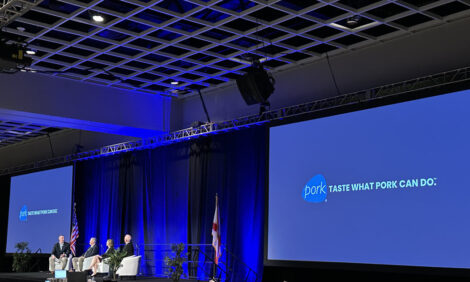



Joint initiative to find future feed for fish, poultry and pigs
Major investment to find new types of feedThe project “The feed of the future for fish, pigs, poultry and laying hens” led by Axfoundation and Swedish University of Agricultural Sciences (SLU) brings together researchers and practitioners from across the Swedish food chain. The goal is to set up production with sales of pigs, fish, poultry, and eggs from laying hens that have been fed a resource-efficient feed with low climate impact. The approach with several different production animals takes advantage of SLU's broad expertise and involves researchers across subject areas.
Can mealworms, clams, fly larvae and residual products from field beans replace conventional feed ingredients?
Feed accounts for 50% to 85% of the climate emissions from poultry, eggs, fish and pigs in Sweden, and often consists of food that we humans could eat directly instead. In the project Future Feed for Poultry, Fish and Pork, Axfoundation and SLU together with 25 partners are now investigating the possibility of developing circular, resource-efficient raw materials to create feed with low climate and environmental impact.
During the project, several innovative feed ingredients will be tested by researchers at SLU. Particularly interesting ingredients are American fruit fly and mealworm reared on waste streams from the food industry, mycoprotein from mushrooms fed with waste streams from the forestry industry, blue mussel from the Baltic Sea that is not suitable for human consumption, and surplus/residual products from the production of Swedish broad bean concentrate. These protein feed raw materials are expected to be able to replace several ingredients in conventional feed, for example soy and fishmeal, which have major negative effects on the climate and biodiversity.
The production animals we work with are fish, pigs and poultry, which makes it a project that collaborates across animal species, something that is not the norm, notes Hanna Carlberg, who is the coordinator for SLU's part in the project. It feels exciting to work together with colleagues from the Department of Energy and Technology, where insects as alternative fodder in the food cycle are researched. Insects as a feed ingredient have a central role in the project, but we also work with the majority of other climate-friendly raw materials such as blue mussel from the Baltic Sea. The project has great potential to enable a more climate-smart food production through new feed raw materials.
There is enormous potential in allowing today's waste to be converted into high-quality protein. But at present, we are not allowed to use the large biodegradable residual streams that exist in society, for example food waste from restaurants and households. The current legislation puts an end to that. It makes an efficient circulation of the waste back into the food chain impossible. What we are now doing in the project is to develop systems for handling permitted residual currents for, among other things, insects, in order to be ready to scale up when the legislation catches up, says Cecilia Lalander, who is associate professor in cycle technology and researches techniques for the safe return of resources from waste at SLU.
The SLU researchers work with a wide range of questions. For pigs and poultry, new feed raw materials must be tested to evaluate nutrient composition and nutrient digestibility. In this way, the potential of the raw materials can be better understood. After that, the goal is for pigs, chickens and eggs to be produced on feed containing these feed raw materials.
For fish, they have come a step further. There is already an evaluated feed that was produced as part of the project Five tons of green fish in a dish, and on which fish were grown at Älvdalslax. For the fish part of the project, the focus is now on improving the methods in the process. For example, it may be about different/other feed ingredients to enable easier handling of certain raw materials and create a feed with the objective of scaling up and achieving a continuous production of farmed fish for the consumer.
There is a demand for more climate-friendly feed for fish, but today's fish feed industry is mainly adapted to large-scale raw material flows. We want to facilitate a wider introduction of more climate-friendly feed through research, collaboration and cooperation with actors in the entire value chain, says Hanna Carlberg.
Researchers and actors from the entire food chain collaborate
The Future Feed for Fowl, Fish and Pork project brings together researchers and actors from the entire food chain, both Swedish farmers, feed manufacturers, food wholesalers, restaurants and actors in the grocery trade. The ambition is to develop new feed mixtures and use these on a pilot scale to challenge laying hens, food birds and pigs in Swedish farmers.
The meat and eggs from the pilot tests will be evaluated sensory and gastronomically. For fish, the ambition is to take the step from pilot to a larger scale with continuous production and sales. All food from the project is then planned to be sold both to restaurants and in shops.






